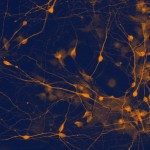Link to Pubmed [PMID] – 21593340
J. Neurosci. 2011 May;31(20):7551-62
Neuronal precursors are continuously integrated into the adult olfactory bulb (OB). The vast majority of these precursor cells originates from the subventricular zone and migrates along the rostral migratory stream (RMS) en route to the OB. This process, called postnatal neurogenesis, results from intricate pathways depending both on cell-autonomous factors and extrinsic regulation provided by the local environment. Using electroporation in postnatal mice to label neuronal precursors with green fluorescent protein (GFP) and to reduce the expression levels of doublecortin (DCX) with short-hairpin (Sh) RNA, we investigated the consequences of impairing migration on the fate of postnatal-formed neurons. First, we showed that electroporation of Dcx ShRNA plasmid efficiently knocks down the expression of DCX and disrupts cells migration along the RMS. Second, we found misplaced anomalous migrating cells that displayed defects in polarity and directionality. Third, patch-clamp recordings performed at 5-7 days post-electroporation (dpe) revealed increased density of voltage-dependent Na(+) channels and enhanced responsiveness to GABA(A) receptor agonist. At later time points (i.e., 12 and 30 dpe), most of the Dcx ShRNA(+) cells developed in the core of the OB and displayed aberrant dendritic length and branching. Additional analysis revealed the formation of GABAergic and glutamatergic synaptic inputs on the mispositioned neurons. Finally, quantifying fate determination by numbering the proportion of GFP(+)/calretinin(+) newborn neurons revealed that Dcx ShRNA(+) cells acquire mature phenotype despite their immature location. We conclude that altering the pace of migration at early stages of postnatal neurogenesis profoundly modifies the tightly orchestrated steps of neuronal maturation, and unveils the influence of microenvironment on controlling neuronal development in the postnatal forebrain.

